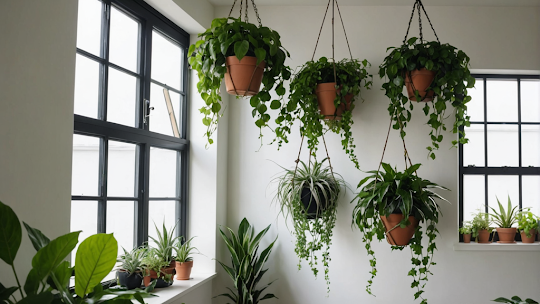Apartment Plants for Small Spaces: Easy Ways to Add Greenery to Your Home
Living in an apartment doesn’t mean you can’t enjoy the benefits of plants. In fact, apartment plants are a fantastic way to bring nature indoors, improve air quality, and create a calming environment—no matter how small your living space is. In this post, we’ll explore why apartment plants matter, how to choose the right ones for your space, and provide some essential care tips to help them thrive.
1. Why Apartment Plants Are Essential
Apartment plants do more than just beautify a space. They offer several benefits that can enhance your well-being and living environment:
a. Air Purification
Plants are natural air purifiers, filtering out toxins and increasing oxygen levels. Some common apartment-friendly plants like Snake Plants, Spider Plants, and Peace Lilies can help remove harmful chemicals like formaldehyde, benzene, and trichloroethylene from the air, making your apartment healthier to live in.
b. Mental Health Benefits
Plants have been shown to reduce stress, improve focus, and boost mood. Studies have found that having greenery around can lower blood pressure, increase feelings of calm, and even improve productivity. This makes apartment plants not only good for the environment but also great for your mental health.
c. Aesthetic Appeal
Adding plants to your apartment can instantly transform your space. Whether it’s a Fiddle Leaf Fig, Pothos, or Succulent, plants add color, texture, and a sense of life to any room. They can complement your existing décor or even be the focal point of your living space.
d. Humidity and Temperature Regulation
In addition to purifying the air, plants help increase humidity and regulate temperature. They release moisture through transpiration, which is particularly helpful in apartments where the air tends to be dry, especially in winter. Plants such as Ferns and Peace Lilies help create a more comfortable indoor environment.
2. Choosing the Right Plants for Your Apartment
Not all plants are suited for apartments. It's important to choose plants based on your available space, light conditions, and how much time you can devote to plant care.
a. Consider Light Conditions
Each plant species has different light requirements. In apartments with limited sunlight, choosing the right plants is crucial:
- Low-Light Plants: Perfect for apartments with little natural light. Examples include ZZ Plants, Snake Plants, and Pothos.
- Medium-Light Plants: These plants thrive with indirect light. Consider Spider Plants, Philodendrons, and Peace Lilies.
- High-Light Plants: For apartments with plenty of direct sunlight, Succulents, Cacti, and Fiddle Leaf Figs are great choices
b. Space-Saving Plants
Since space in apartments is often limited, choosing compact or vertical plants can help you maximize your available room:
- Air Plants: These plants don’t need soil and can be creatively displayed in terrariums or wall mounts.
- Miniature Ferns: Small ferns like Maidenhair Ferns are perfect for adding greenery to tight spaces.
- Trailing Plants: Plants like English Ivy or Pothos can be placed in hanging baskets or on shelves to save space.
c. Low-Maintenance Plants
If you’re a beginner or often away from home, opt for plants that require minimal care. Succulents, Cacti, and ZZ Plants are low-maintenance and can thrive in a variety of conditions with little attention.
3. Essential Tips for Apartment Plant Care
Once you’ve selected your plants, it’s important to care for them properly. Here are some key tips to help your apartment plants thrive:
a. Watering
Overwatering is a common mistake. Most plants prefer to dry out between waterings, so always check the soil’s moisture before adding more water. Use a well-draining pot to prevent water from collecting at the bottom, which can cause root rot. Generally, watering once a week is sufficient, but always check your plant’s specific needs.
Indoor plants need nutrients to grow. Use a balanced, liquid fertilizer every 4-6 weeks during the growing season (spring and summer). Avoid over-fertilizing, as this can damage the roots or cause excessive growth.
c. Cleaning
Dust can accumulate on plant leaves, blocking sunlight and reducing photosynthesis. Wipe leaves with a damp cloth every couple of weeks to keep them clean. For larger plants, you can use a gentle shower to rinse off dust.
d. Repotting
As plants grow, they may need more space for their roots. If your plant seems crowded or if roots are growing out of the drainage holes, it’s time to repot. Choose a pot that’s one size larger than the current one and add fresh soil.
Apartment living doesn’t have to mean sacrificing the beauty and benefits of plants. With the right plants and care, you can turn your apartment into a lush, green haven, no matter how small your space is. From purifying the air to boosting your mood and decorating your home, apartment plants are an essential addition to any living space.
By considering your lighting, choosing space-saving plants, and caring for them properly, you can create an indoor garden that thrives in your apartment. So, whether you're a plant newbie or a seasoned plant parent, now is the perfect time to start adding greenery to your home.
-min.png)






